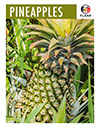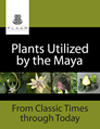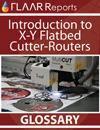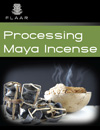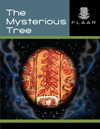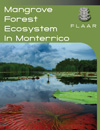Of the seven companies who make high-end professional flatbed scanners (Heidelberg, FujiFilm, Scitex, ScanView, Screen, and Purup-Eskofot), which is the most appropriate?
The Purup-Eskofot scanner did poorly in a recent test. Besides, Purup-Eskofot manager at Seybold said they do not make their scanner available for review outside of their office. Sort of hard to find out how a Purup-Eskofot scanner really functions in real-life, so scratch that scanner.
The current top of the line Agfa scanner is their OEM version of the FujiFilm C-550 Lanovia, which received top marks in a recent FLAAR review by Nicholas Hellmuth. Yet we have received several complaints that FujiFilm is next to impossible to contact. I found the same problem myself, even at the FujiFilm booth at the recent GraphExpo trade show in Chicago. If you can't get any attention it does not help much if the scanner is nice.
Heidelberg's Topaz has been an international favorite. Now Heidelberg has a replacement for their Topaz which should be even better, the Nexscan. Heidelberg makes its other scanners available for review, but not the top of their line.
The Cezanne from Screen is considered high in quality but slow in speed. The Cezanne is also a rather ungainly shape.
 |
|---|
At GraphExpo trade show, the Scitex exhibit and Scitex equipment made the best impression on us. For example, we had received an e-mail from an astronomer who needed a scanner to handle old glass plates (images sandwiched in between glass plates, the old-fashioned way of preserving such negatives). FujiFilm was uninterested in handling this challenge. Heidelberg said the required specs were highly unusual and concluded that most high-end scanners could not handle the job. But the Scitex people calculated that indeed it was possible for their scanner record these glass plates, or to at least try out. Overall my perception of the Scitex people was that they were willing to try any challenge of this technical nature.
As a result the Digital Imaging Technology Center has recently received a Scitex scanner. We will be reviewing this for many more niches than just the pre-press. I personally believe that a scanner of this class is ideal for photo archives. Think of how many museums have archives of decades of old photographs, all of which need to be scanned. This is not the task for a normal desktop scanner. Check out www.cameras-scanners-flaar.org and www.flatbed-scanner-review.org
If you have several thousand slides to scan, the Scitex may well be the answer. First, you do not want a 35mm slide scanner such as Nikon or Polaroid. Even with an autoloader, it would take you years to scan several thousand slides. With a tabloid-sized flatbed you can place a minimum of 40 slides on the bed simultaneously. Also, you can get better quality from a Scitex scanner than from any toaster-sized 35mm scanner. A recent ad for the Nikon scanner claimed it produced scans comparable to that of a drum scan. What nonsense, the software itself is inadequate. To get adequate software for the Nikon scanner you need SilverFast from LaserSoft, which you can obtain separately.
A mail order company (one which is otherwise reputable), included a claim for a Umax scanner "the PowerLook III will produce quality scans certain to satisfy even the most demanding professional." Yes, this $895 scanner does indeed produce nice scans (I own two of these scanners and they are great, for $895). But if you are professional you would hardly want to be caught with having a Umax scanner as your top-of-the-line (I use the Umax solely for low-res images for the Internet). If you are professional you would want at least the Umax PowerLook 3000. But if you are a "demanding professional," you would surely want a serious scanner such as ScanView, Fuji, or Scitex.
In other words, a scan from a Umax is just fine, until you see the same image scanned by a ScanView, Fuji, or Scitex. Then you really know what a professional scan looks like, and no Umax scan will quite satisfy you anymore.
If you need to scan medium format or 4x5, then again, none of the toaster-sized units are appropriate because few go over 1200 dpi at 4x5 size. Double-check the specs.... toaster sized multi-format scanners may claim a high dpi, but that is only in their sweet spot, not over their entire bed. The only dedicated slide scanner that comes close is the Imacon. With a Scitex scanner, in distinction, you get full dpi across the complete bed. The history of these scannrs started with Scitex. They were bought by Creo and named CreoScitex for a while. Then Creo dropped the name Scitex. Then Afew years later Kodak bought Creo and is already dropping the name Creo. The Supreme scanner model, has remained their top of the line, with occasional tweaks such as the upgrade from SCSI to USB 2.
Just as soon as the Scitex arrives we will post reviews on all the FLAAR sites especially www.cameras-scanners-flaar.org and www.flatbed-scanner-review.org.








